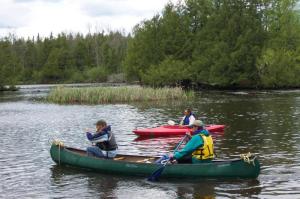From the Saint Croix National Scenic Riverway:

A new National Park Service (NPS) report shows that 221,028 visitors to the St. Croix National Scenic Riverway in 2012 spent $8.7 million in communities near the park. That spending supported 124 jobs in the local area.
“The St. Croix National Scenic Riverway is proud to welcome visitors from across the country and around the world,” said Superintendent Chris Stein. “We are delighted to share the story of this place and the experiences it provides and to use the park as a way to introduce our visitors to this part of the country and all that it offers. National park tourism is a significant driver in the national economy – returning $10 for every $1 invested in the National Park Service – and it’s a big factor in our local economy as well. We appreciate the partnership and support of our neighbors and are glad to be able to give back by helping to sustain local communities.”
The peer-reviewed visitor spending analysis was conducted by U.S. Geological Survey economists Catherine Cullinane Thomas and Christopher Huber and Lynne Koontz for the National Park Service. The report shows $14.7 billion of direct spending by 283 million park visitors in communities within 60 miles of a national park. This spending supported 243,000 jobs nationally, with 201,000 jobs found in these gateway communities, and had a cumulative benefit to the U.S. economy of $26.75 billion.
According to the report most visitor spending supports jobs in restaurants, grocery and convenience stores (39 percent), hotels, motels and B&Bs (27 percent), and other amusement and recreation (20 percent).
To download the report visit http://www.nature.nps.gov/socialscience/economics.cfm
The report includes information for visitor spending at individual parks and by state.
To learn more about national parks in Minnesota and Wisconsin and how the National Park Service works with Minnesota and Wisconsin communities to help preserve local history, conserve the environment, and provide outdoor recreation, go to www.nps.gov/Minnesota or www.nps.gov/Wisconsin.







